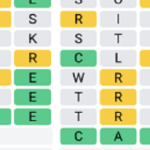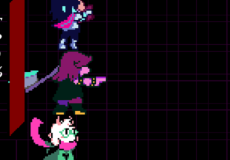
Dead Tapes: Fading Father
Advertisement
Dead Tapes: Fading Father begins in a house that feels both lived-in and hollow. The player steps into the role of a man struggling with inner conflict, facing the weight of memory and the effects of past decisions. The surroundings are sparse and quiet, yet each room seems to hold an unspoken story. The journey is not guided by action, but by observation — walking through narrow halls, entering rooms marked by subtle disorder, and encountering clues that hint at a deeper personal story unfolding with each step.
Advertisement
Similiar games
Dead Tapes: Fading Father begins in a house that feels both lived-in and hollow. The player steps into the role of a man struggling with inner conflict, facing the weight of memory and the effects of past decisions. The surroundings are sparse and quiet, yet each room seems to hold an unspoken story. The journey is not guided by action, but by observation — walking through narrow halls, entering rooms marked by subtle disorder, and encountering clues that hint at a deeper personal story unfolding with each step.
The Role of Audio and Interaction
As the player explores, the house reveals objects that trigger memories, most notably audio tapes. These tapes serve as a window into the mind of the main character, delivering short, disconnected thoughts that gradually form a timeline. The house changes slightly as each tape is played, with new obstacles appearing or paths opening in response to interaction. The story doesn’t move in a straight line. Instead, it’s built through repetition, reflection, and choices made during movement and inspection.
Core Mechanics and Features
The experience is short but deliberate, offering key elements such as:
· First-person exploration in a contained environment
· Audio-based storytelling using cassette tapes
· Light puzzle mechanics tied to object placement
· Small environmental changes triggered by progress
· A narrative centered on addiction, loss, and isolation
Each mechanic ties back to the central narrative, ensuring that gameplay decisions remain closely connected to emotional development.
Symbols Within the Structure
Dead Tapes: Fading Father uses objects not just as tools, but as signals of meaning. Items like alcohol bottles, damaged furniture, or sealed rooms reflect the mental and emotional condition of the protagonist. The repeated image of coffins in unlikely places forces the player to consider themes of mortality and consequence. These elements do not offer direct answers but invite interpretation. As the house gradually reveals more, the character’s mental state is mirrored in its shifting layout and visual tone.
Moving Toward a Quiet End
As the final rooms are explored and the last tape is played, the full picture of the protagonist’s life becomes clear. The experience does not deliver resolution in the traditional sense. Instead, it concludes with the recognition that some truths cannot be undone and some choices leave lasting traces. Dead Tapes: Fading Father is built to be experienced in one sitting, offering a focused and personal exploration of regret, memory, and what remains when a person fades within their own space.
Discuss Dead Tapes: Fading Father
























